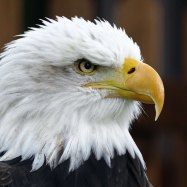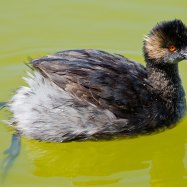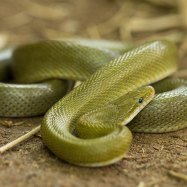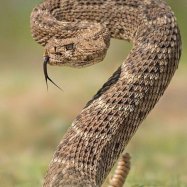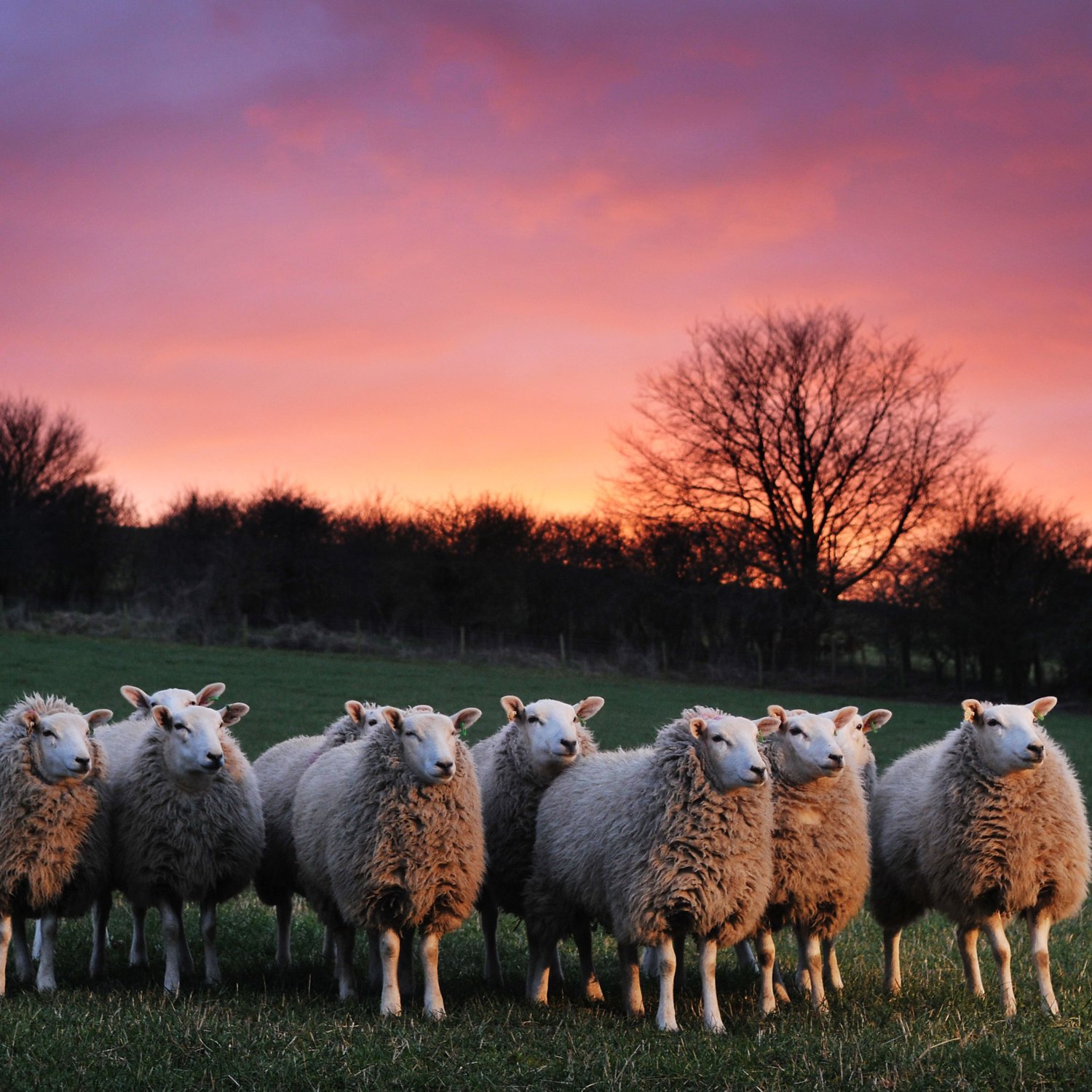
Sheep
1.4 - 1.8 meters
Sheep are domesticated farm animals known for their fluffy coats and calm nature. They belong to the Bovidae family and have a medium-sized, stocky body. These gentle creatures can grow up to 1.4-1.8 meters in length and are commonly found in farmlands and pastures. Keeping sheep is not only beneficial for their wool and milk production, but they also provide companionship and help maintain the ecosystem.
Animal Details Summary:
Common Name: Sheep
Kingdom: Animalia
Habitat: Grasslands, mountains, and forests
The Amazing World of Sheep: From Pastures to Mountains to Everywhere
Sheep are fascinating creatures that have been domesticated by humans for thousands of years. They are gentle, social animals that have found their way into our pastures, farms, and even our hearts. These fluffy creatures may seem simple at first glance, but they have a complex history and a wide array of unique features that make them stand out in the animal kingdom. In this article, we will delve into the amazing world of sheep, exploring their scientific name, characteristics, habitat, and more Sheep.The Science behind Sheep: Ovis aries
Sheep belong to the Animalia kingdom, which includes all animals. They are part of the Chordata phylum, which means they have a spinal cord and a backbone. Within the class of Mammalia, sheep fall under the order of Artiodactyla, which includes even-toed hoofed animals such as deer, pigs, and cows. Within this order, sheep are part of the Bovidae family, which also includes other grazing animals such as goats, antelopes, and bison.The scientific name for sheep is Ovis aries, with "Ovis" meaning sheep and "aries" meaning ram, the male sheep. Interestingly, the term "sheep" is also used to refer to the animal in its common name, making it a unique exception in the animal kingdom. Sheep are believed to have been domesticated from their wild ancestors, the mouflon, around 10,000 years ago in Mesopotamia. This domestication was a significant development in human history, as it marked the beginning of agriculture and the transition from a hunter-gatherer lifestyle to a more settled way of life.
The Common Sheep: Characteristics and Appearance
Sheep are medium-sized animals, with a stocky body shape and thick woolly coat Siamese. They have a unique way of walking on their hooves, which are divided into two toes that help them adapt to various terrains. Their coat comes in various colors, including white, black, brown, and many other shades. These colors may vary depending on the breed, but they all serve as excellent camouflage in their natural habitat.On average, sheep can grow to 1.4-1.8 meters in length and weigh between 45-180 kilograms. Females, called ewes, are usually smaller, whereas males, called rams, are larger and have distinct curved horns. These horns are used for defense and attracting females during mating season. The exact size and weight of sheep may vary depending on their breed, as there are over 200 different breeds of sheep worldwide, with each possessing unique characteristics and appearances.
The Wondrous Habitat of Sheep
Sheep are one of the most adaptable animals in the world, able to thrive in a wide range of habitats. They are naturally found in grasslands, mountains, and forests, making them a common sight in different regions worldwide. Some of the countries where sheep are native include UK, Iceland, Australia, and New Zealand.Sheep are also frequently found in farmlands and pastures, where they are kept by humans for their wool, meat, and milk. They are excellent grazers, using their large serrated teeth to efficiently consume vegetation, primarily grass. This herbivorous feeding method has led to sheep being used as natural lawnmowers in some areas, where they help keep pastures and landscapes tidy.
The Versatility and Utility of Sheep
Sheep have been an essential part of human life for thousands of years, and their usefulness cannot be overstated. As mentioned earlier, they provide three primary products - wool, meat, and milk, making them a valuable livestock animal. Wool, in particular, has been an essential commodity for centuries, with different breeds producing different types of wool used for clothing, textiles, and other products.Their meat, often referred to as lamb or mutton, is also a popular source of protein, and it is consumed worldwide in various forms. Similarly, sheep's milk is used to make dairy products such as cheese, yogurt, and butter, providing valuable nutrition for humans.
In addition to their direct use as a food source, sheep also play a crucial role in land management and conservation. Their grazing habits help maintain the health and biodiversity of pastures, ensuring a balanced ecosystem.
The Global Spread of Sheep
Sheep are not native to one specific country or region, but they have been widely spread and introduced to different parts of the world. It is believed that sheep were first introduced to the Americas by Spanish explorers in the 16th century. From there, they were brought to other countries, including Australia and New Zealand, where they flourished and became essential economic resources.Today, sheep can be found on all continents, with the majority being concentrated in areas with a mild and temperate climate. However, they have also been introduced to colder regions, such as the Arctic, where their hardiness and adaptability have allowed them to thrive.
The Amazing Abilities of Sheep
Sheep may seem like gentle, passive creatures, but they possess some amazing abilities that have helped them survive in the wild and adapt to various environments. Some of these abilities include:• Great senses: Sheep have an excellent sense of hearing and smell, which helps them detect predators from a distance. They also have a visual acuity that allows them to spot potential danger.
• Camouflage: As mentioned earlier, sheep's coat comes in a range of colors that serve as great camouflage in their natural habitat. This helps them avoid detection from predators, such as wolves and coyotes.
• Natural thermoregulation: Sheep's thick woolly coat not only provides insulation from the cold but also helps regulate their body temperature during hot weather. They have the ability to shed and regrow their wool to adapt to changing seasons.
• Strong herding instinct: Sheep are social animals that have a strong instinct to stick together in a flock. This helps protect them from predators and ensures their survival as a species.
Sheep Conservation and Future Challenges
Due to their long history of domestication and global spread, sheep currently have a stable and widespread population. However, like all animals, they face conservation challenges, mainly due to loss of habitat and human interference. Their grazing habits have caused concern in certain areas, where overgrazing can lead to soil erosion and loss of biodiversity.In addition, sheep are also susceptible to diseases, such as foot rot and pneumonia, which can significantly affect their population if not managed properly. It is, therefore, essential to balance human use of these animals with conservation efforts to ensure their continued survival.
Conclusion
In conclusion, sheep are amazing animals that have been an integral part of human history and society. Their adaptability, utility, and unique characteristics make them a valuable part of our lives. From their domestication in ancient civilizations to their widespread population worldwide, sheep continue to amaze and fascinate us. They are truly a remarkable species that deserve our respect and protection, both in the wild and in our farms.

Sheep
Animal Details Sheep - Scientific Name: Ovis aries
- Category: Animals S
- Scientific Name: Ovis aries
- Common Name: Sheep
- Kingdom: Animalia
- Phylum: Chordata
- Class: Mammalia
- Order: Artiodactyla
- Family: Bovidae
- Habitat: Grasslands, mountains, and forests
- Feeding Method: Herbivorous
- Geographical Distribution: Worldwide
- Country of Origin: Unknown
- Location: Farmlands, pastures
- Animal Coloration: White, black, brown, and various other colors
- Body Shape: Medium-sized, stocky
- Length: 1.4 - 1.8 meters
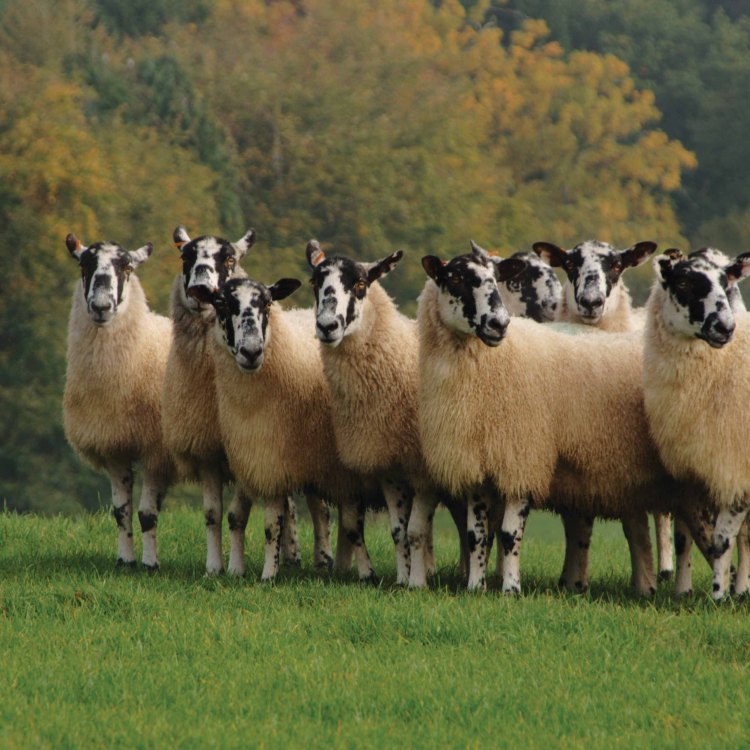
Sheep
- Adult Size: Average weight: 45 - 100 kg
- Average Lifespan: 10 - 12 years
- Reproduction: Sexual
- Reproductive Behavior: Polygynous (males mate with multiple females)
- Sound or Call: Bleating
- Migration Pattern: Non-migratory
- Social Groups: Flocks, herds
- Behavior: Gregarious, herd animals
- Threats: Predation, disease, habitat loss
- Conservation Status: Domesticated species
- Impact on Ecosystem: Grassland maintenance
- Human Use: Meat, milk, wool
- Distinctive Features: Curved horns (in males), woolly coat
- Interesting Facts: Sheep have excellent memory and can recognize up to 50 different individuals.
- Predator: Wolves, coyotes, and big cats
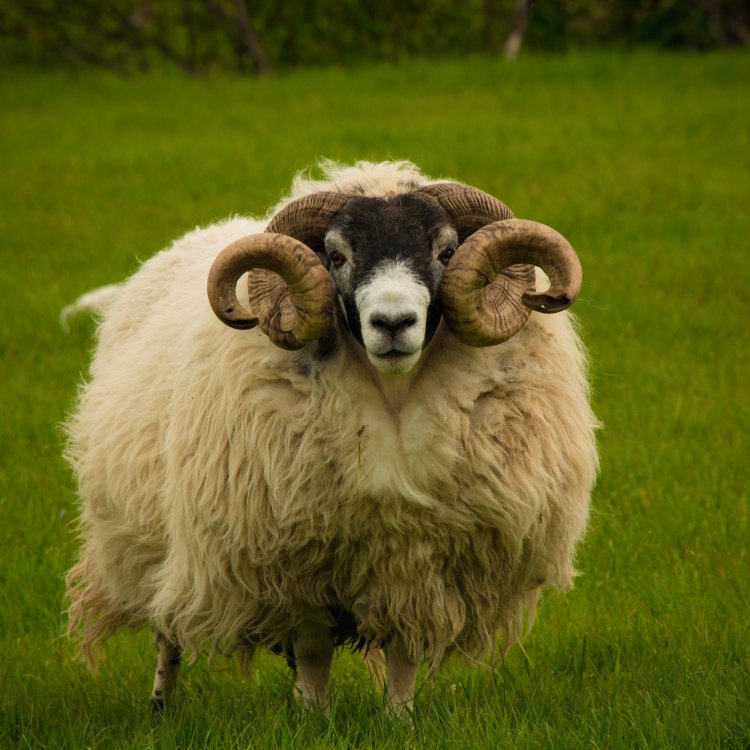
Ovis aries
The Fascinating World of Sheep: From Grassland Maintainers to Mutton Providers
Sheep are one of the most common domesticated animals in the world, with over one billion individuals currently inhabiting our planet. These gentle creatures have been a part of human civilization for thousands of years, providing us with valuable resources such as meat, milk, and wool. However, there is so much more to sheep than just being a source of sustenance for us. From their unique reproductive behavior to their important role in maintaining grasslands, sheep are truly fascinating creatures PeaceOfAnimals.Com.Adult Size and Average Lifespan
Sheep are relatively small in size compared to other farm animals, with an average weight ranging from 45 to 100 kilograms. However, their exact size can vary depending on their breed, diet, and health. Their compact size makes them easy to handle and transport, making them a popular choice for domestication in various cultures.
On average, sheep have a lifespan of 10 to 12 years, although some breeds have been known to live for up to 20 years. The lifespan of a sheep can be affected by numerous factors such as their living conditions, diet, and susceptibility to diseases. For example, sheep living in a stress-free and well-maintained environment tend to live longer than those living in harsh conditions.
Reproductive Behavior and Polygynous Mating
Sheep are sexual animals, meaning they require a mate for reproduction. However, their reproductive behavior is quite different from other animals. Unlike monogamous species, sheep are polygynous, which means that males mate with multiple females Snow Goose. This behavior is deeply ingrained in their evolutionary history, as it helps with the survival of the species. By mating with multiple females, males increase their chances of passing on their genes to the next generation.
During breeding season, known as the "rut," male sheep compete with one another for dominance and the opportunity to mate with females. This competition can be displayed aggressively, with males using their curved horns to fight for the attention of the females. The strongest and most dominant males are usually the ones who get to mate with the most females.
Sound or Call: The Bleat of a Sheep
If you have ever been near a flock of sheep, you have most likely heard their signature sound – the bleat. This is the primary way in which sheep communicate with one another. They have a wide range of vocalizations, from gentle grunts to loud bleats, each with a different meaning. Lambs, in particular, bleat to call for their mothers or when they are in distress. Ewes will also bleat to communicate with their lambs, calling out to them to stay close or to follow them.
Migration Pattern and Social Groups
Unlike some other animals, sheep do not migrate and are considered non-migratory. They prefer to stay in one place and graze on the land around them. This is why they are often seen in flocks or herds, moving together in search of food.
Sheep are gregarious animals, which means they prefer to be in the company of other sheep. In the wild, this is for survival purposes, as being in a herd makes them less vulnerable to predators. Domesticated sheep also exhibit this behavior, and they tend to do better when they have other sheep for company.
Behavior: Gregarious Herd Animals
As mentioned earlier, sheep are gregarious animals, meaning they prefer to live and move in groups. This behavior is evident in their strong social bonds, which are necessary for survival. In a herd, sheep will often stand close to one another and can even develop close friendships with specific individuals.
One interesting behavior of sheep is their excellent memory. They have been known to recognize up to 50 individual sheep and can remember faces and voices for years. This is a vital skill in their natural habitat, where they need to know who to trust and who to avoid. In domesticated settings, this memory also helps with flock management and can make handling sheep easier for human caregivers.
Threats to Sheep: Predation, Disease, and Habitat Loss
Despite being a domesticated species, sheep still face numerous threats in their environment. One of the most significant threats to sheep is predation, with wolves, coyotes, and big cats being their main predators. These animals see sheep as an easy target, and their attacks can result in significant losses for farmers.
Sheep are also vulnerable to diseases, such as foot rot and respiratory infections, which can be fatal if left untreated. These diseases often spread quickly within a flock, making it crucial for farmers to monitor their sheep's health regularly.
In recent years, habitat loss has also become a threat to sheep populations. As human development encroaches on natural habitats, the grazing lands for sheep are shrinking, making it challenging for farmers to find suitable pasture for their flocks.
Conservation Status: Domesticated Species
Unlike some other animals, sheep are not currently at risk of extinction. This is because they are a domesticated species and are bred in large numbers for human use. However, it is essential to note that some breeds of sheep are considered endangered due to factors such as declining numbers and inbreeding. These breeds often have unique genetic traits that make them valuable for conservation efforts, and steps are being taken to protect and preserve these rare breeds.
Impact on Ecosystem: Grassland Maintenance
While sheep may not be considered a keystone species, they play a crucial role in maintaining grassland ecosystems. By grazing on vegetation, sheep help control the growth of plants and prevent overgrazing. This, in turn, helps maintain a balance in the ecosystem and promotes the growth of different plant species.
Furthermore, the manure produced by sheep provides essential nutrients for the soil, helping to keep the land fertile and healthy. This impact on the ecosystem is one of the many reasons why sheep have been used for centuries in agriculture and land management.
Human Use: Meat, Milk, and Wool
Sheep have been domesticated for thousands of years for their valuable resources - meat, milk, and wool. Their meat, known as mutton, is a popular choice for many cuisines around the world. It is leaner and has a richer flavor compared to other meats such as beef and pork. Sheep's milk is also used to produce various dairy products such as cheese, yogurt, and butter.
Wool is one of the most significant contributions of sheep to human civilization. It has been an essential material for clothing and other products for centuries, and its popularity continues to this day. Sheep's wool is versatile and can be used to make a wide variety of products, from clothing to carpets and blankets.
Distinctive Features: Curved Horns and Woolly Coats
Sheep are most commonly recognized by their distinctive features – curved horns in males and a woolly coat. Their horns are not just for show; they play a vital role in male reproductive behavior and their defense against predators. Female sheep, known as ewes, do not have horns.
Their woolly coats are also a defining feature of sheep, providing them with insulation and protection from the elements. Sheep are sheared for their wool, with the process being done carefully to ensure the animal's safety and well-being. Their coats come in a variety of colors and textures, depending on their breed.
Interesting Facts: Sheep's Excellent Memory and Predators
While sheep may not be the first animal that comes to mind when we think of intelligence, they have some surprising cognitive abilities. One of their most impressive feats is their excellent memory. Studies have shown that sheep can recognize up to 50 different individuals, even after being separated from them for extended periods. They can also remember faces and voices, making them one of the few animals capable of such complex recognition.
Another interesting fact about sheep is their predators. While we typically think of wolves, coyotes, and big cats as the main threats to sheep, there is another predator that often goes unnoticed – the domestic dog. Domestic dogs, especially those bred for herding, can be a significant threat to sheep flocks if not trained and managed correctly.
In Conclusion
Sheep are fascinating creatures with a long history of coexistence with humans. Their unique reproductive behavior, gregarious nature, and essential role in maintaining grasslands make them a vital species in our ecosystem. From their distinctive physical features to their valuable resources, sheep continue to be an essential part of human civilization. So the next time you see a flock of sheep, take a moment to appreciate these amazing animals and their contribution to our world.
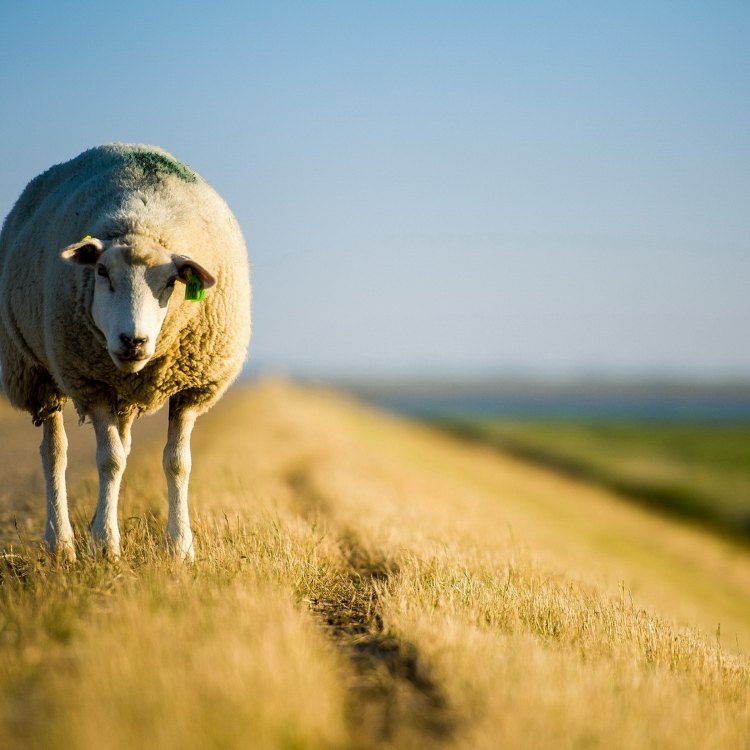
The Amazing World of Sheep: From Pastures to Mountains to Everywhere
Disclaimer: The content provided is for informational purposes only. We cannot guarantee the accuracy of the information on this page 100%. All information provided here may change without prior notice.

